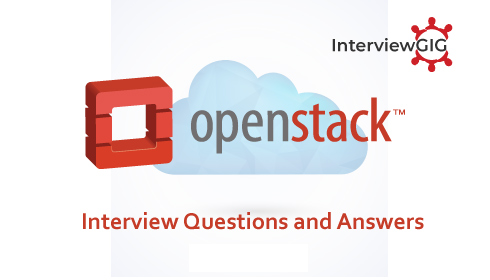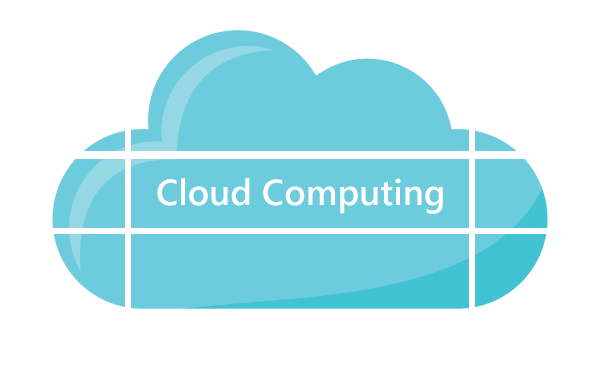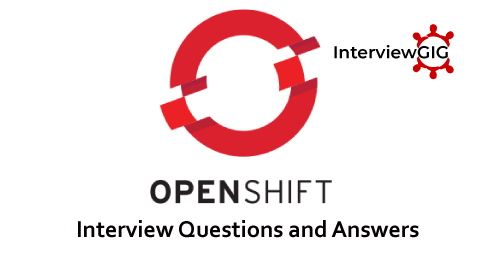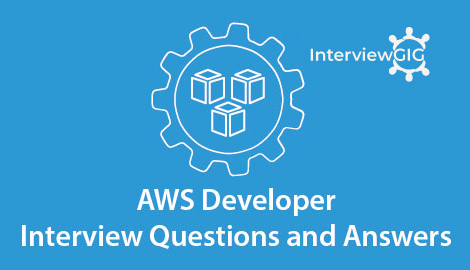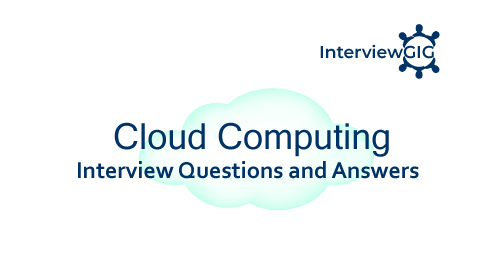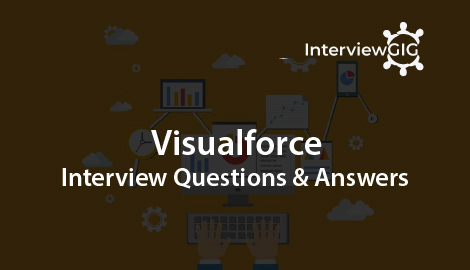An IT Infrastructure engineer is a professional responsible for designing, implementing, and managing the technology components that make up cloud computing environments. Their role involves configuring and maintaining virtualized resources, such as servers, storage, networks, and services, within public, private, or hybrid cloud platforms. They ensure the reliability, scalability, and security of cloud infrastructure, monitor performance, troubleshoot issues, and optimize resource allocation.
Cloud Infrastructure engineers collaborate with development and operations teams to enable seamless deployment of applications and services, leveraging automation and orchestration tools to streamline processes. Their expertise is crucial in enabling organizations to harness the benefits of cloud technology.
Here are the following top 25+Scenario Based Infrastructure Engineer interview questions and answers.
What are the main Roles & Responsibilities of Infrastructure Engineer?
Infrastructure Engineer Roles and Responsibilities:
- Designing, deploying, and maintaining IT infrastructure.
- Managing servers, networks, storage, and cloud resources.
- Implementing security measures and access controls.
- Monitoring system performance and troubleshooting issues.
- Automating tasks through scripting and tools.
- Ensuring high availability and disaster recovery.
- Collaborating with development teams for seamless integration.
- Scaling infrastructure to accommodate growth and demand.
- Implementing and managing Infrastructure as Code (IaC).
- Maintaining documentation and staying updated with technology trends.
What are your experiences with cloud infrastructure?
Sample Answer: In my previous role, I managed the migration of a legacy application to AWS. I designed the architecture using EC2 instances and an RDS database. I implemented auto-scaling to handle variable traffic and set up Elastic Load Balancing for distribution. Additionally, I utilized CloudWatch for monitoring and alarms. This project improved application performance and reduced operational overhead
What are the main different types of cloud computing platforms?
The different types of cloud computing platforms are:
Infrastructure as a Service (IaaS): Provides virtualized computing resources over the internet, like virtual machines and storage.
Platform as a Service (PaaS): Offers a platform for developers to build, deploy, and manage applications without managing infrastructure.
Software as a Service (SaaS): Delivers software applications over the internet, eliminating the need for local installation and maintenance.
How do you implement disaster recovery for your infrastructure?
To implement disaster recovery:
- Identify critical assets and potential risks.
- Create a recovery plan with backup and restore procedures.
- Establish off-site data backups and replication.
- Implement failover systems for high availability.
- Regularly test the plan and update it as needed.
How do you monitor your infrastructure for performance issues?
To monitor infrastructure performance:
- Use monitoring tools to track metrics like CPU, memory, and network usage.
- Set up alerts for thresholds and anomalies.
- Monitor application response times and user experience.
- Regularly review logs and analyze trends.
- Conduct performance tests and optimizations.
How do you troubleshoot infrastructure issues?
To troubleshoot infrastructure issues:
- Gather information about the problem and recent changes.
- Check system logs and monitoring data for anomalies.
- Test components individually to identify the source.
- Collaborate with teams and communicate updates.
- Implement fixes or workarounds, then verify results.
- Document the issue and solution for future reference.
What are your thoughts on infrastructure as code?
Infrastructure as Code (IaC) is a crucial concept that greatly improves the efficiency and reliability of managing infrastructure. By defining infrastructure components using code, we can automate the provisioning, scaling, and maintenance processes. This approach ensures consistency, reduces human error, and enables rapid deployment across different environments. IaC also promotes collaboration between development and operations teams and facilitates version control for infrastructure configurations.
What are your experiences with automation in infrastructure?
Automation is becoming increasingly important for infrastructure management. I have experience with a variety of automation tools, such as Ansible, Chef, and Puppet. I am also familiar with the different automation frameworks available.
Can you describe a time when you had to troubleshoot a complex infrastructure issue?
I encountered a complex issue where a sudden spike in traffic was causing our application to become unresponsive. After analyzing logs and metrics, I identified that a specific database query was becoming a bottleneck. I optimized the query, implemented caching mechanisms, and fine-tuned our load balancer settings. The collaborative effort between our development, database, and infrastructure teams led to resolving the issue and improving overall application performance.
What is the difference between a virtual machine (VM) and a container?
A virtual machine is a software-based emulation of a physical computer, while a container is a lightweight, isolated environment for running applications and their dependencies. Containers share the host OS kernel, making them more efficient than VMs.
How would you ensure high availability and fault tolerance for applications deployed on a cloud platform?
I would use techniques like setting up instances across multiple availability zones, load balancing, auto-scaling, and implementing database replication or clustering to ensure redundancy and minimize downtime.
What is the purpose of an Elastic Load Balancer in AWS, and how does it work?
An ELB distributes incoming traffic across multiple instances to ensure even load distribution and improve application availability. It performs health checks on instances to route traffic to healthy instances.
What's the purpose of a Content Delivery Network and how does it work?
A CDN improves the performance of delivering web content by caching it on servers distributed globally. This reduces latency by serving content from a server closer to the user’s location.
How would you troubleshoot a slow-performing application?
I would start by monitoring system resources (CPU, memory, disk, network), analyzing logs, conducting performance tests, and utilizing profiling tools to identify bottlenecks and areas for optimization.
What is the concept of network segmentation and its benefits?
Network segmentation involves dividing a network into smaller, isolated segments to enhance security and performance. It helps contain potential breaches and limits the lateral movement of threats.
How does serverless computing work, and what are its advantages?
Serverless computing allows developers to focus solely on writing code without managing server infrastructure. Cloud providers automatically handle scaling and resource allocation based on demand. This reduces operational overhead and costs.
How would you design a cloud architecture to handle disaster recovery effectively?
I would design an architecture with data replication across multiple regions, automated backups, and regular data synchronization. I might use cloud-specific disaster recovery services and implement failover mechanisms to ensure minimal downtime during outages.
What is the difference between private cloud, public cloud, and hybrid cloud models
A private cloud is dedicated to a single organization, a public cloud is accessible to the public over the internet, and a hybrid cloud combines elements of both, allowing data and applications to be shared between them.
How do your secure data at rest and in transit in a cloud environment?
Data at rest can be secured using encryption mechanisms, like encrypting storage volumes. Data in transit can be secured using SSL/TLS protocols for communication between clients and servers.
What is autoscaling, and why is it important in cloud environments?
Autoscaling automatically adjusts the number of instances based on real-time demand. It ensures optimal resource utilization and prevents overprovisioning, which helps maintain application performance and cost efficiency.
Can you explain the concept of cloud vendor lock-in and how to mitigate its risks?
Cloud vendor lock-in refers to the challenge of being tightly dependent on a specific cloud provider’s service. To mitigate risks, you can use cloud-agnostic tools and services, follow open standards, and design architectures that allow for easy migration between cloud providers.
One of your servers suddenly becomes unresponsive. How would you troubleshoot and resolve the issue?
I would begin by checking system logs and monitoring tools to understand the cause. If it’s a resource issue, I’d look at CPU, memory, and disk usage. If necessary, I might perform a reboot or restart relevant services. If the issue persists, I’d investigate further, considering hardware failures, software conflicts, or recent updates
How do you secure sensitive data stored in your infrastructure?
Implement encryption for data at rest and in transit, use strong authentication mechanisms, apply access controls and permissions, regularly update and patch systems, and follow security best practices.
Can you describe the process of disaster recovery planning?
Disaster recovery planning involves identifying potential risks, creating strategies to mitigate those risks, establishing backup and recovery processes, testing the plan, and regularly updating it.
Describe the process of migrating an on-premises Exchange server to Exchange Online Exchange Online Migration
.
The process involves:
- Assessing current environment.
- Setting up Exchange Online account.
- Creating migration endpoints.
- Configuring mail flow.
- Initiating mailbox migration using tools like Exchange Admin Center or PowerShell.
- Monitoring migration progress.
- Verifying successful migration and updating DNS records.
- Decommissioning on-premises Exchange.
How would you ensure data security and compliance in Microsoft 365?
To ensure data security and compliance in Microsoft 365:
Identity and Access Management: Implement strong authentication methods, role-based access controls, and enforce multi-factor authentication.
Data Encryption: Enable encryption for data at rest and in transit using features like Azure Information Protection and Microsoft 365 Encryption.
Data Loss Prevention (DLP): Define policies to prevent sensitive data leakage and monitor and restrict unauthorized data sharing.
Compliance Center: Utilize Microsoft 365 Compliance Center to manage compliance, configure retention policies, and conduct eDiscovery.
Auditing and Monitoring: Enable auditing, monitor logs, and use Security & Compliance Center to track user activities and potential security breaches.
Security Baselines and Policies: Apply security baselines, configure security policies, and enforce consistent security settings across the organization.
Mobile Device Management: Employ Intune to manage and secure mobile devices accessing company data.
Regular Training and Education: Conduct security awareness training for users to understand and adhere to security practices.
Third-party Integrations: Integrate third-party security tools to enhance protection and extend security capabilities.
Continuous Review: Regularly assess and update security measures based on evolving threats and compliance requirements.
